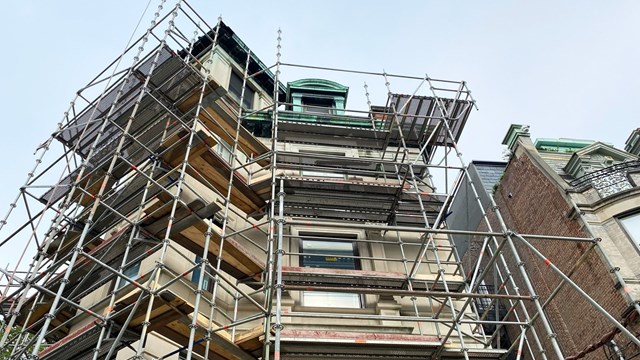One of the most effective means of enhancing the value of an apartment or house is through "cosmetic" renovations. These types of improvements are, ostensibly, surface upgrades that address the appearance of a property, rather than such structural changes as replacing or tearing down walls. Assuming the infrastructure is sound, cosmetic improvements will help increase the value of your property, whether for purposes of sale or to simply provide an environment that meets your personal standards. Moreover, these improvements prudently constitute preventative maintenance, which saves both money and aggravation in the long-term.
Before embarking upon any home improvement projects, however, I recommend mentally organizing your space by separating the "public" and "private" areas. Picture the public areas as the living room, dining room and entry foyer - anywhere guests are welcome. The private areas will then comprise bedrooms, bathrooms, kitchens, studies and the like.
This exercise helps to delineate the space and make you more aware of what works and what doesn't. It gives you a clearer idea of the circulation patterns in a room, which evolve through the physical set-up of the space, as well as the placement of the furniture. The natural traffic flow that is derived from these factors will determine how well a space is being used or how inefficiently, such as underutilized public space that could be converted into storage.
Most importantly, when approaching cosmetic renovations take the time to determine which upgrades are worth implementing and which expenses are worth incurring. Such "face" value items as new bath fixtures, shower enclosures, kitchen appliances and cabinetry will not only make a home appear more attractive, it makes these areas more efficient, thus increasing value. Lighting is another element that will have a strong impact upon the appearance of a home. Other details such as hardware and accessories help to create an integrated picture. And the curbside appeal of refinished doors, newly painted walls and a good paint job are all key components of the overall presentation. Even a generic storage system adds panache and makes everything appear more modern.
Whether prepping a home for purposes of sale or a more comfortable environment, the goal is to create a home that shows well at first glance. Therefore, the changes should be consistent, which precludes patchwork for walls or floors. Moreover, if you are putting a property on the market, then don't bother re-furnishing with something that someone else will remove and you can't take with you. Common sense is a major component of this process.
No matter what the size or scope, all projects require forethought, which requires preparing a comprehensive plan, i.e., a Master Plan, which covers everything from project goals to the sequencing of the construction. Document your ideas and plans, so that the vendors understand your requirements. The less information left to interpretation, the more likely the work will be executed correctly.
Co-op and condo owners need to contact building management regarding regulations, guidelines and alteration agreements. Although cosmetic work doesn't require a permit, building management will have alteration guidelines that cover the times when the work may be implemented, criteria for deliveries, etc.
Once a Master Plan is established, you'll have the information needed to discuss your project with contractors and workmen. Contractors are usually found through word of mouth or the building manager. Reputable ones may also be located in reference guides such as the Blue Book of Building & Construction (www.thebluebook.com) and The Franklin Report (www.franklinreport.com) or check out The Cooperator's Official Directory of Co-op and Condo Services (www.cooperator.com), accessible from the home page.
During the interviewing process, be sure to request references and ask to see their work. Arrange to meet with the project or construction manager, too, since that is who will be at the site - your home - on a daily basis. Finally ask to see their Certificate of Insurance to see what kind of coverage they have. Building management will also need to see the Certificate of Insurance stating both the general contractors' name and the "also insured" parties on the policy, which will be in effect for the duration of the project.
Once you are satisfied with the estimate, proposed scope of work, professional background references, personalities, etc., it is time to get a schedule of the work to review and approve. If all goes well and the contract meets your approval, you are generally responsible for an initial payment of 10 percent on materials at signing. Subsequent payments will be based on the work that is completed only.
To complete your project, make sure you sign off on the completed punchlist, then request a waiver of liens for payment, a one-year warranty and a guarantee on the work performed, as well as on the appliances and fixtures.
There are many benefits to cosmetic renovations because they tend to be shorter projects and less expensive. But preparation and planning are still critical to the process. Always think before you build and you'll do it right the first time.







Leave a Comment